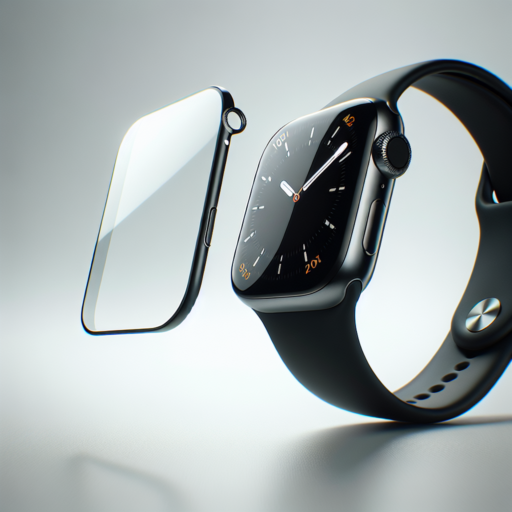Understanding the Concept of Pace: An Overview
The concept of pace is essential in numerous fields, from athletic endeavors to academic studies, and even in our day-to-day activities. At its core, pace is the measure of speed or progress towards a specific goal within a set period. It’s a universal benchmark that helps individuals and organizations gauge efficiency, set realistic expectations, and achieve objectives systematically.
Understanding pace goes beyond simply recognizing its definition; it involves delving into its application and relevance in different contexts. For instance, in running, pace is quantified as the amount of time it takes to cover a specific distance, typically measured in minutes per kilometer or mile. This quantification allows athletes to set targets, improve performance, and compare efficiencies. On the other hand, in the academic realm, pace can relate to the speed at which a student comprehends and applies new information, significantly affecting learning strategies and outcomes.
Adapting pace to suit personal or organizational needs is crucial for success. For athletes, it might mean adjusting training schedules and techniques to gradually increase their pace, while for students, it might involve tailored study plans that accommodate their learning velocity. By understanding and optimizing pace, individuals can enhance productivity, achieve personal bests, and ultimately, reach their goals more effectively.
Calculating Your Pace: A Step-by-Step Guide
Understanding your running or walking pace is essential for setting realistic training goals and measuring your progress. Calculating your pace, which is usually measured in minutes per mile or kilometers, helps you tailor your workouts effectively. Whether you’re training for a marathon or just aiming to improve your general fitness, having a clear knowledge of your pace can significantly enhance your training regimen.
Step 1: Measure Your Distance
The first step in calculating your pace is to accurately measure the distance you’ve run or walked. This can be done using a smartphone app, a GPS watch, or by mapping out your route using online tools. Ensure that the distance measurement is as accurate as possible for a precise pace calculation.
Step 2: Record Your Time
Once you have the total distance, the next step is to record the time it took to cover that distance. Use a stopwatch or the timer on your smartphone or GPS watch to get an accurate measurement. Remember, consistency is key when recording your time, so try to maintain a steady pace throughout your run.
Step 3: Calculate Your Pace
With both the distance covered and the time taken in hand, calculating your pace is straightforward. Divide the total time by the distance. For instance, if it took you 30 minutes to run 5 kilometers, your pace would be 6 minutes per kilometer. It’s important to regularly calculate your pace to monitor improvements and adjust your training as needed.
The Importance of Knowing Your Pace for Effective Training
Understanding your pace is a cornerstone of effective training, whether you’re a seasoned athlete or a fitness enthusiast just beginning your journey. Knowing your pace helps in setting realistic goals and crafting a training plan that’s both challenging and achievable. It’s not just about how fast or slow you move, but about finding a rhythm that matches your current abilities and future aspirations.
Personalized training plans are almost impossible to create without first understanding your pace. This data allows trainers and coaches to tailor workouts that optimize performance, minimize the risk of injury, and ensure consistent progress. It’s like having a roadmap that guides you through your fitness journey, showing where you need to speed up and where to maintain your current speed for optimum results.
Additionally, knowing your pace can significantly boost your motivation and confidence. When you see tangible improvements in your pace, it confirms that your hard work is paying off. This can be incredibly encouraging, pushing you to stick with your training plan and strive for even better results. It’s not just about physical endurance; understanding your pace fosters a mental resilience that is just as important for achieving your fitness goals.
Tools and Apps to Help You Measure Your Pace Accurately
When delving into the world of fitness, especially running or walking, the precision in measuring your pace can significantly impact your training outcomes. Fortunately, the digital age offers a plethora of tools and apps designed meticulously to provide accurate results. These innovations have revolutionized the way we approach our fitness routines, enabling both novices and seasoned athletes to optimize their performance through detailed insights into their activities.
Strava, known for its robust community and detailed tracking, stands out as a premier option. It not only measures your pace but also offers unique features like segment rivalries and heat maps of your routes. This app turns ordinary runs into engaging challenges, pushing you to improve with each step.
Another noteworthy mention is MapMyRun. Provided by Under Armour, this app excels in its seamless integration with a vast array of devices, ensuring that you can track your pace regardless of the gadget you use. Its user-friendly interface and comprehensive workout logs make it an indispensable tool for those keen on analyzing their performance in depth.
For individuals seeking tailor-made experiences, Garmin Connect offers unparalleled customization. Compatible with Garmin’s extensive range of watches, it not only tracks pace accurately but also provides detailed analyses on various aspects such as stride length and balance. The app’s capability to sync with other fitness platforms further enhances its utility, making it a favorite among those dedicated to achieving precise fitness goals.
Comparing Running, Walking, and Cycling Paces: What You Need to Know
When assessing the difference between running, walking, and cycling paces, it’s crucial to understand the unique benefits and challenges each activity presents. Running often requires a higher level of physical exertion, translating into faster calorie burn and improved cardiovascular fitness over shorter distances.
Understanding Running Pace
Running is generally the fastest of the three activities, with average paces ranging significantly based on fitness level, terrain, and technique. For many, sustaining a 6- to 8-minute mile is a marker of a strong pace. However, it’s essential to note that while running may lead to quicker fitness outcomes, it also puts more stress on the joints than walking or cycling.
Walking Pace and Benefits
Walking, although slower, offers an accessible form of exercise that can be sustained over more extended periods. With an average pace of 15 to 20 minutes per mile, walking is less about speed and more about endurance and consistency. The lower impact nature of walking makes it an excellent choice for individuals looking for a low-risk form of cardiovascular exercise.
Cycling: Speed and Efficiency
Cycling, on the other hand, allows for a balance between low impact and higher speed, with average cycling paces greatly varying depending on factors like bike type, terrain, and cyclist experience. Road cycling can average speeds of 15 to 20 mph on flat terrain, making it a highly efficient mode of exercise for covering greater distances without the high impact on joints seen in running.
How to Improve Your Pace: Tips and Strategies for Athletes
Improving your pace, whether you’re a seasoned athlete or a fitness enthusiast, requires a combination of discipline, smart training, and the right mindset. There are several proven strategies that can help you pick up speed and maintain it over longer periods. Here, we delve into a few tips that can guide athletes in enhancing their pace effectively.
Develop a Solid Base
Building a strong aerobic base is fundamental for any athlete looking to improve their pace. This involves committing to long, slow distances at a comfortable speed to enhance cardiovascular efficiency. By focusing on increasing your mileage gradually, you maintain a lower risk of injury while enhancing stamina. Incorporate consistent endurance runs into your training regimen to lay a solid foundation upon which speed work can be built.
Incorporate Interval Training
Interval training is essential for athletes seeking to improve their pace. This type of training involves alternating between periods of high-intensity effort and low-intensity recovery. Incorporating short bursts of speed followed by brief recovery periods into your runs can significantly enhance your anaerobic capacity and overall speed. It is advised to start with shorter intervals and gradually increase the duration and intensity as your body adapts.
Rest and recovery are also crucial aspects of improving your pace. The body needs time to heal and adapt to the stresses of training. Ensure you include adequate rest days in your training schedule and consider activities such as yoga or foam rolling to aid in recovery. Listen to your body and adjust your training accordingly to prevent overtraining and burnout.
No se han encontrado productos.
Average Pace Standards for Different Fitness Levels
Understanding the average pace standards for different fitness levels can be a game-changer for individuals aiming to enhance their fitness regimen or set new personal records. Whether you’re a beginner trying to establish a baseline, an intermediate athlete looking to progress, or an advanced competitor aiming to excel, knowing these standards can provide clarity and direction in your training.
For beginners, the emphasis is often on consistency and gradual improvement. A slower pace focusing on endurance and the ability to complete a distance comfortably is typical. For those in the intermediate category, the goal shifts towards improving speed and efficiency, with a noticeable increase in pace as well as a greater focus on recovery and pacing strategies. Advanced athletes, on the other hand, push the boundaries of their performance, with pace standards that are often significantly quicker, reflecting their higher fitness levels and specialized training.
To better understand these categories, here’s a brief outline:
Beginners
- Focus is on building endurance.
- Pace is steady but not strenuous.
- Goal is to finish rather than compete.
Intermediate
- Increasing speed and efficiency.
- Introduction of pacing strategies.
- Consistent training and recovery are key.
Advanced
- Highly competitive pace standards.
- Emphasis on detailed training plans.
- Recovery is as crucial as training intensity.
This categorization helps individuals in gauging where they stand and what they need to work on to elevate their fitness and running performance.
Real-Life Applications of Pace in Sports and Daily Activities
Understanding the concept of pace and its real-life applications can significantly enhance both athletic performance and the effectiveness of daily activities. Pace, often defined as the speed at which an activity is carried out, plays a crucial role in optimizing efforts and achieving desired outcomes in various scenarios.
In Athletics and Sports
In the realm of sports, mastering the art of pacing is essential for athletes aiming to improve their performance. For instance, runners use pace to evenly distribute their energy throughout a race, ensuring they can maintain speed without burning out too quickly. Similarly, swimmers rely on pacing strategies to manage their strokes and breathing in long-distance events, balancing speed with endurance. This tactic is not limited to individual sports; team sports players also benefit from understanding pace. Soccer players, for example, must pace themselves to maintain a high level of performance over the 90-minute match, strategically conserving their energy for bursts of speed when necessary.
In Daily Life and Activities
Outside the competitive world, the concept of pace finds its application in enhancing efficiency and productivity in daily tasks. Effective pacing can prevent burnout in the workplace by balancing workload and breaks, allowing for sustained concentration and mental stamina. In the context of personal health and fitness, individuals apply pacing to exercise routines, gradually increasing the intensity to improve cardiovascular health without risking injury. Moreover, the principle of pace is utilized in time management, where it aids in evenly distributing efforts across tasks, ensuring that energy levels are maintained throughout the day.
Accurately measuring and adjusting pace according to the activity and one’s physical condition can lead to improved health, performance, and overall quality of life. Whether it’s pacing a morning jog, managing work assignments, or planning efforts in a team sport, understanding and applying the concept of pace can offer a strategic advantage in numerous real-life situations.
Frequently Asked Questions About Pace Measurement
Understanding pace measurement is crucial for athletes, coaches, and fitness enthusiasts to optimize performance and training. Whether you’re a runner aiming to improve your personal best or a hiker wanting to know how far you can travel, mastering pace measurement techniques is essential. Here, we delve into some commonly asked questions that help clarify the nuances of this topic.
What Is Pace Measurement in Athletic Training?
Pace measurement in athletic training refers to the calculation of the speed at which a person moves, usually quantified as time taken per unit distance, like minutes per mile or kilometer. It’s a fundamental metric for setting and achieving fitness goals, planning workout sessions, and tracking improvement over time. Understanding your pace helps tailor training intensity, predict race times, and adjust strategies to maximize efficiency and performance.
How Do You Calculate Your Pace?
Calculating your pace is straightforward: divide the total time taken by the distance covered. For instance, if you run 5 kilometers in 25 minutes, your pace is 5 minutes per kilometer. Today, numerous smart devices and apps can automatically track and calculate your pace, offering insights and historical data to see improvements and set goals. However, knowing how to manually calculate it is useful for understanding your performance in depth and planning training sessions.
Why Is It Important to Monitor Pace?
Monitoring your pace is vital for effective training and injury prevention. It allows athletes to adjust their effort during workouts and races, preventing burnout and optimizing performance. For enthusiasts of any sport, knowing your pace can help in evenly distributing effort, ensuring you’re not starting too fast and exhausting yourself prematurely. Moreover, pace monitoring plays a key role in recovery training, helping manage workout intensity to align with recovery phases, thus reducing the risk of injury.
Top Mistakes to Avoid When Tracking Your Pace
Tracking your pace, whether you’re a runner, cyclist, or involved in any regular physical activity, is crucial for measuring progress and setting goals. However, common pitfalls can distort your understanding of your true pace, hindering your ability to improve effectively. By recognizing and avoiding these mistakes, you can ensure a more accurate assessment of your performance and set realistic, achievable goals.
Ignoring Rest Days and Recovery Periods
One of the most significant errors athletes make is neglecting the impact of rest and recovery on their pace. It’s essential to understand that your body needs time to repair and strengthen itself after workouts. Tracking your pace without accounting for necessary rest days can lead to a misleading analysis of your performance, potentially pushing you towards unrealistic expectations and overtraining.
Focusing Solely on Distance or Speed
Another common mistake is concentrating exclusively on distance or speed without considering other important metrics such as heart rate or elevation. Distance and speed are important, but they don’t provide a complete picture of your performance or the difficulty of your route. For example, running a 5K with significant elevation gains is an entirely different challenge than running the same distance on a flat course. Incorporating a variety of data points can offer a more nuanced understanding of your pace and overall fitness level.
Overrelying on Technology
While fitness trackers and GPS watches are invaluable tools for measuring pace and progress, overrelying on technology can sometimes lead to inaccuracies. Devices may vary in accuracy due to signal issues, calibration errors, or hardware limitations. Manual checks, such as periodically running known distances to verify your device’s accuracy, can help mitigate the risk of being misled by technological glitches. It’s also beneficial to learn how to gauge your pace based on physical cues and perceived exertion, ensuring you’re not entirely dependent on electronic feedback.
Understanding and avoiding these mistakes can significantly enhance the effectiveness of tracking your pace, leading to improved performance and a better overall fitness experience.




